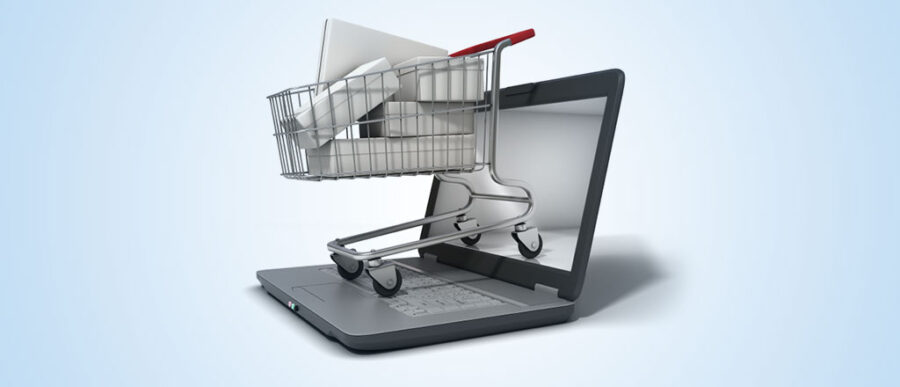Attention online retailers: Product images please consumers, but only in small doses.
Online shopping sites vying for customers in a busy holiday season might be tempted to cram their web pages with a variety of images of gift choices. After all, it stands to reason that giving shoppers more options should make them more likely to purchase. But it turns out that more is not necessarily merrier.
Displaying too many images can actually overwhelm consumers and make them stop shopping, according to a study by Barbara E. Kahn, Wharton marketing professor and director of the Jay H.Baker Retailing Center, and Claudia Townsend, a marketing professor at the University of Miami. Their paper, “The ‘Visual Preference Heuristic’: The Influence of Visual versus Verbal Depiction on Assortment Processing, Perceived Variety, and Choice Overload,” was published recently in the Journal of Consumer Research.
The authors tested the effect of product variety and complexity on “choice overload,” which happens when an overwhelmed shopper gives up. In a series of five experiments, they found that people preferred to look at images rather than read product descriptions when they are shopping. So it is good for shopping sites to make heavy use of pictures. People also perceived visual images as having more variety — whether or not it was true — and they preferred having more choices rather than fewer.
But give shoppers too many pictures to look at and they get overloaded mentally, the researchers found. Faced with this complexity, consumers are more likely to delay their shopping. “If the assortment of product images gets too large, people might just scan all of them really quickly. They look too fast at it, and they just can’t take in all the variety,” says Kahn. “If there’s too much variety and the choices feel overwhelming, people delay their purchase.”
Kahn’s and Townsend’s study of online shopping preferences comes at a time of continued growth in cybershopping during the holidays. Forrester Research expects U.S. holiday online retail sales to increase by 15% this year to $78.7 billion, with 167 million shoppers hitting the web. It would be the third year in a row of double-digit increases. But one big problem facing retailers is shopping cart abandonment. According to IBM Digital Analytics Benchmark, 67.4% of online carts were abandoned during this year’s Cyber Monday. That is up 3.63% from the prior year.
Displaying too many images can actually overwhelm consumers and make them stop shopping.
The authors set out to discover how the depiction of product assortments, either through images or words, affected shoppers’ perceptions of product variety, complexity and the likelihood of making purchases. First, previous research had shown that people process words and pictures differently, so it matters whether a website puts up photos or descriptions of products. A person uses the left inferior parietal lobule of the brain to process words while the right middle occipital gyrus is for pictures. There are also consistent differences in brain processing between these two areas when it comes to memory, expectation and attention.
The brain processes images all at once — as well as more quickly and automatically. The connection between an image and its meaning is more direct than it is for words. “Because it is faster and more automatic, the processing of images as opposed to words likely feels easier,” the researchers write. That was why participants preferred visual instead of verbal depictions. Words are also processed sequentially and in a more piecemeal and systematic fashion. It is slower and takes more effort. The difference between the two types of depiction reflects “the old adage, ‘A picture is worth a thousand words,’” Kahn says.
But the downside to looking at too many product images is that the consumer tends to take too little time to consider all the options. There also is a greater likelihood of skipping some items. With verbal descriptions, shoppers slow down and consider each choice methodically. Verbal also trumps visual when shoppers are looking at a big assortment of items online: They can handle it better and tend to continue shopping. With images, however, they are more easily overwhelmed when faced with many choices and thus are more likely to stop.
Crackers, Mutual Funds and Nail Polish
In the first experiment, Kahn and Townsend tested whether people preferred to see images or written descriptions of products when they were shopping. Participants also were asked whether they wanted to view a set of eight or 27 options when asked to make a choice. There were 290 people who participated in the online test for compensation. Forty percent were men and the mean age was 33. Participants were split into two groups: One was asked to shop online for crackers for a party, while the other was asked to choose a mutual fund to invest $500.
Both groups were also asked whether they would want to see the assortment of options depicted in images or in text. About two thirds preferred to see images rather than words regardless of whether they had chosen eight or 27 choices. Even in mutual funds, participants preferred images over words. “That was surprising,” Kahn says. “Even in a category like mutual funds typically described by words, people preferred the visual depiction.”
The second experiment delved deeper into people’s preference for visuals. Kahn and Townsend asked 171 participants – 43% male with a mean age of 35 — to shop for nail polish for a female friend at an online beauty store. Three groups of nail polish were presented. In the first group, color choices were starkly different: blue, red and pink. The second group had three similar pink polishes described as bold pink, perfect pink and softest pink. The third group added more useful description to the pink shades: 001 most pale pink, 002 light pink and 003 medium pink. All participants saw either eight or 27 options.
The goal was to determine whether looking at pictures or reading descriptions made consumers remember the products more easily.
The authors found that 83.6% of people overall preferred pictures rather than descriptions. In cases where similarly hued nail polish had the more detailed descriptions, people still mostly preferred pictures to words, but at a significantly lower percentage. “Where we found the overwhelming preference for visual depiction to decrease a bit was when the visual depiction doesn’t help as much as verbal depiction might in explaining differences among product options,” Kahn says. “If you see 20 different colored pinks and you’re not sure which is which, you start to look at the words or color names.”
The third experiment proved that when consumers looked at images, their eyes skimmed the pictures somewhat haphazardly. But when they looked at assortments with options described by words, they tended to view the options in a more systematic pattern and were more likely to move to items right next to each other (either across or down) rather than look randomly across the whole assortment. They also took longer. The fourth study was a product-matching test; the goal was to determine whether looking at pictures or reading descriptions made consumers remember the products more easily. When it came to an assortment of eight choices, pictures won. But with 27 choices, verbal descriptions provided better recall.
The last test focused on “choice overload,” when a consumer feels bombarded by options, gets stressed and decides to stop shopping. Kahn and Townsend asked 236 undergraduate business students, with a mean age of 18.6 years and 61% female, to take part. They were told to shop online for crackers for a party. Participants did not feel stressed, whether they looked at pictures or read descriptions, when they were presented with eight choices. With 27 choices, they also did not feel stressed when they read verbal descriptions. But they did get “choice overload” when looking at images for 27 options. In this case, more of them stopped shopping.
Lessons for Online Retailers
The results show that “consumers do not always know what is best,” the authors write. There are some situations where if consumers are forced to take time to read about different options and think about them, they will process more deeply. But they do not generally like this option. The popularity of photo-heavy mobile apps further exacerbates the situation and can paradoxically suppress buying. “The current tendency for mobile apps to favor graphics exclusively may cause consumers to delay or not to purchase at all,” according to the paper. “While the images are fun, there may be a tendency to gloss over them, rather than make a purchase, when there are too many.”
One retailer to emulate is Apple, known for its minimalist website design.
What e-commerce sites should learn from the experiments is this: Presenting products visually is better than doing so verbally as long as too many products are not offered at once. The authors did not recommend an optimal number of images, as that optimal number may differ by product categories and individual differences among consumers. But one thing is clear: “It’s very nice to show the options visually if you can,” Kahn says. “If it’s a very large assortment, then you have to do something to slow them down and allow [shoppers] to systematically peruse them.” Too many product images cause people to miss some items. Retailers should find a way to slow down their scanning, perhaps by adding creative titles or descriptions to the products, she adds.
Another way to encourage consumers to consider products more carefully is to organize them in a way that makes sense to them. “If you know how the consumer organizes a category in [his or her] head, and you can match the structure of the external environment with the consumer’s internal categorization, it’s much easier for [him or her] to take in the variety,” Kahn says For example, if a shopper categorizes wines by the grape varieties, it is jarring to send the wines organized by region rather than by grape type.
One retailer to emulate is Apple, known for its minimalist website design. Recently, its online store showed only 10 products: iPads, iPhones, MacBook, the Anki Drive Starter Kit, Michael Kors bag, 94Fifty Smart Sensor Basketball, Nike FuelBand, Logitech PowerShell Controller and Battery, Dr. Dre headphones and Apple TV. “Apple has always been a visually based company, and their website does a good job of minimizing the number of images presented at a time,” the authors write. “They are able to make the choice process seem quick, fun and easy without seeming complex and overwhelming.”


